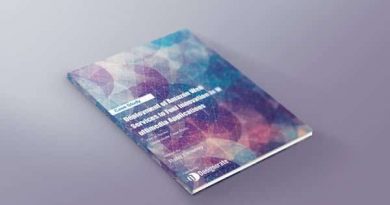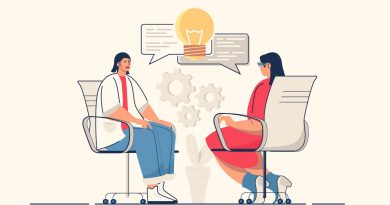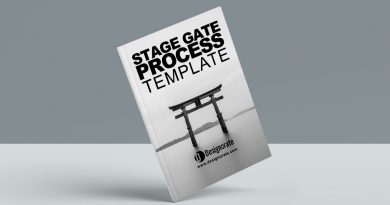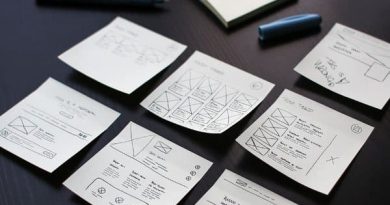Estimating a Design Project Budget
One of the challenges that face designers when they start a freelance job, build their own studio or take the responsibility of a design manager inside an existing organization is estimating the design project budget. Unlike the majority of projects discussed in a project management course, the design is a creative process that involve stages that may be unpredictable or hard to predict such as conceptualizing and client feedback. Additionally, the design, itself, can act as an independent project or part of a large project development process.
Designers and design managers should be equipped with the required knowledge and understanding before determining the project budget requested by the client as design projects require intense discussion and brainstorming before reaching the final creative brief and job description. While each design project has its own characteristics and nature that affects the output, there are general criteria that can help better estimate for creative projects.
Project Estimation Approaches
Applying in a business proposal or accepting a job offer from a specific client are followed with the agreements on cost. There are two different approaches for estimating the project budget depending on the scenario and scope of project initiation; the top-down estimate and the bottom-up estimate.
Top-Down Estimate
In this approach, the conversation between the client and the designer starts by defining the budget from the client. This approach is applied when the client has a fixed budget in hand and would like to work based on this budget. For example, the client asks, “We would like to create a X design project and our budget $Y, can you do this project with the specific requirements on this budget?” The budget usually is a plus or minus parameter within the estimated cost.
The advantage of is certainty of the budget, so you may be able to optimize your costs to fit within this budget, yet it does not provide a space for negotiation especially if the budget is under you or your agency costs.
This approach is more suitable for new designers and studios that still do not have previous experience with estimating similar project. Usually, the client who uses this approach knows the market and the rough estimates for the project in hand.
Bottom-Up Estimate
In this approach, the cost estimation is on the designer’s side. So, the client asks the designer or the agency representative, “What is your quote for developing and delivering the project X?” While this approach gives a broader space for the designer to give an estimation which equates to developing a work relationship, it does not give an idea about the client’s budget and subsequently there is a higher possibility for rejection especially if the budget is higher than what the client has in mind.
Unlike, the top-down estimate approach, the bottom-up estimate requires a thorough understanding of the project in order to give the proper estimation. Therefore, communication is critical with the proposed client. Furthermore, the designer should be aware of the competitive market in order to know the estimates that may be provided by other companies or designers.
Type of Costs to Consider in the Budget
Both approaches require a very good understanding to the resource costs that will be spent during the project. Each project consumes specific amounts of each resource inside an organization: the sum of these costs in addition to the profit percentage form the total budget of the project. The type of costs vary depending on the project size and the company size which will also vary from an individual freelancer to a large design agency.
Direct Costs
The direct costs represents the cost of any resource that has a direct relation with the project. These resources are dedicated to the project totally or partially. These costs include the following:
Labor cost
This cost represents the cost of the team who are involved in project development. Generally, the labor cost is calculated based on the hourly rate for the designer or the developer working in the project with the estimate of 8 working hours per day. So, if the design task will take 15 hours, the designer hourly rate is $US 50, then the cost of accomplishing this task is as following;
$US 50 X 15 = $US 750
And if it will take around two days to be completed and if the task allows two designers to work simultaneously, then the cost will be the same and can be accomplished in one day. In this case, a collaboration and arrangement between both designers should be done in order to complete the task.
Hiring external resources to do the job is also part of the labor cost. However, some freelancers prefer to work with a flat price rather than the hourly rate. So, the expert will ask for a specific price amount, which is added to the total labor cost. Some companies add the external resource as separate cost item in order to differentiate it from an in-house employee cost.
The labor cost can be easy for a small team or for freelance jobs that can be achieved by one or two designers, more math should be done for larger team efforts by giving consideration to varied hourly rates and the experience required to organize the work between the team members.
Materials
Based on the project requirements, the materials required to deliver the design work should be calculated and added to the direct cost of the project. The materials can include printing materials such as the paper that will be used to print the design such as books or brochures. In the digital domain, the materials may take a different medium such as server and domain registration to deliver the application. The material cost varies depending on the nature of the design project such as fashion design, product design…etc.
Extra costs
Each project has its redefined requirements. Some project require extra costs that should be considered within the cost calculation. For example, if the client needs audio recording for sound tracks, a studio may need to be be rented for this specific project if the company does not have a studio available. The external cost should be considered based on the project and may require previous experience with similar projects in order to understand the future needs of the project during the development process.
Indirect Cost
The indirect costs are the expenditures that have no direct relation with the project and can serve different projects such as the office renting, office equipment such as computers, desks, meetings rooms and other extrinsic factors. The consumption of the company assets can be considered part of the indirect cost that should be added to the project budget as well.
Understanding the project requirement
Having a clear vision about the project helps in avoiding any unexpected problem during the development process. The stakeholders meet with the client to get full information about the whole process. This information is implemented and assigned to different departments including the design department. The design-related requirements is formed in the creative brief and this information should guide the creative process yet also the pricing for the project in an early stage of the project discussion.
In order to receive accurate answers that will be used as a quide in the development process, the correct questions should be asked to the clients. These questions serve different departments involved in the project. Therefore, representatives of each department should involve selecting the question that will be asked to the client.
Reaching a Client Agreement
Once the budget is approved, it should be documented clearly in the final agreement or contract. Problems and debates may occur due to the unclear definitions for the agreed terms between the client and the company. The design projects may involve client modifications, which may consume time, effort and cost more than expected. Therefore, design modifications and feedback should be considered in the cost calculation and defined in the final agreement and/or contract. While some designers or design agencies limit the modification to minor changes or a specific number of changes, the design process itself should include a method that helps reduce the client changes to a minimal level. For example, getting approvals based on a visual demo or layout can help in reducing the changes in the middle of the design process. Understanding the project requirements and delivering this understanding clearly to the designers can help reduce the client comments and modifications.
In sum, putting the accurate estimate for the design project budget requires a clear and thorough understanding of the client needs in balance with the assets in hand. Most designers and new design studios find it hard to give the right and professional estimate for a business proposal. However, breaking down the company expenditures based on the available assets and how much each asset contributes in the project development help in getting an accurate final and itemized budget to present to the client for approval.
Specific considerations may need to be taken into account when working in creative projects due to the nature and scope of the project, as well as the client’s preferences and vision about brand visualization. These considerations include writing a clear creative brief and getting design-related information such as the colors and style that represent the brand, so that the designer, project and client are all on the same creative page.






